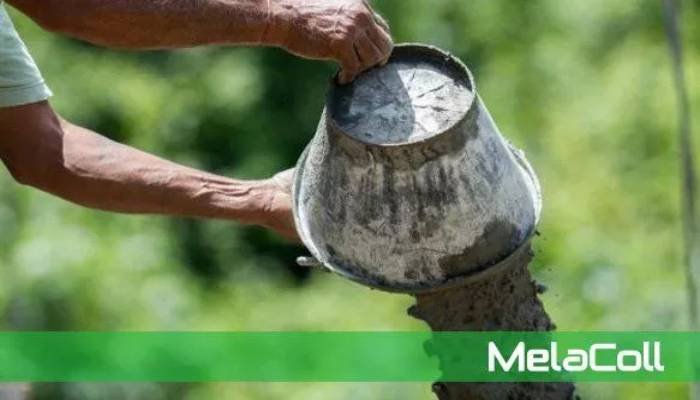
With the development of modern building constructions, performance of cellulose ethers is closely combined with mortar. Cellulose ether is formed by the etherification of cellulose or one or more etherifying agents and dry grinding. MelaColl™ cellulose ether products include HPMC, HEMCe HEC, multi-purpose additives widely used in cement products. Factors related to the properties of cellulose ethers are becoming a hot topic in the industry.
 Different types of cellulose ethers aqueous solutions will gel at different temperatures. The gel is entirely reversible and forms a solution upon cooling. Cellulose ether has unique reversible thermal gelling properties. In many cement products, the viscosity perforcemant of cellulose ethers and the corresponding water retention and lubricating properties are mainly utilized, and its viscosity is directly related to the gel temperature. Below the gelation temperature, the higher the viscosity of the cellulose ether, the better its water retention capacity.
Different types of cellulose ethers aqueous solutions will gel at different temperatures. The gel is entirely reversible and forms a solution upon cooling. Cellulose ether has unique reversible thermal gelling properties. In many cement products, the viscosity perforcemant of cellulose ethers and the corresponding water retention and lubricating properties are mainly utilized, and its viscosity is directly related to the gel temperature. Below the gelation temperature, the higher the viscosity of the cellulose ether, the better its water retention capacity.
Cellulose ether in cement products is mainly as a thickener, plasticizer, and water retention agent. So viscosity and gel temperature are important factors to control performance of cellulose ethers.
Cement systems are systems with extremely complex physical and chemical properties. The temperature and viscosity of the cellulose ether gel will be affected by many factors, and the influence trend and degree are different. Therefore, when choosing cellulose ether products, factors that cause changes in gel temperature should be considered.The viscosity and gel temperature is an important performance of cellulose ethers. The main factors affecting the viscosidade e gel temperature performance of cellulose ethers solution in cement products are as follows:
1. The effect of pH on viscosity
Since MC and HPMC are non-ionized, the viscosity of their solutions usually has broader pH stability performance of cellulose ethers than that of natural ionic rubber. Still, if the pH value exceeds 3 to 11, they are at higher temperatures or after long-term storage. Its viscosity will gradually decrease, especially in high viscosity solutions. The viscosity performance of the cellulose ether product solution in a strong acid or alkali solution decreases, which is mainly because the alkali and acid promote the dehydration of the cellulose ether. Therefore, the viscosity performance of cellulose ethers usually has a certain degree of decline in the alkaline environment of the cement product.

2. Effect of heating rate and stirring on the gel process
The gel point temperature perforcemence of cellulose ethers is a combination of the heating rate and the agitation shear rate. High-speed agitation and rapid heating usually result in a significant increase in gel temperature, which is advantageous for mechanically mixing cement products.
3. Effect of concentration on thermal gel
An increase in the concentration of the solution generally lowers the gel temperature, and the gel point of low-viscosity cellulose ether is higher than that of high-viscosity cellulose ether.
4. Effect of additives on thermal gel performance of cellulose ethers
eterMany materials in the field of building materials are inorganic salts, which may significantly impact the gel temperature of the cellulose ether solution. Some additives may increase the thermal gel temperature of cellulose ether. In contrast, others may lower the thermogel temperature of the cellulose ether, depending on whether the additives promote coagulation or solubilization.
For example, the solubilizer ethanol, PEG 400 (polyethylene glycol), propylene glycol, etc. can increase the gel point. Salts, glycerin, and sorbitol will reduce the gel point. Non-ionic cellulose ethers usually do not precipitate due to polyvalent metal ions.
Still, when the concentration of electrolyte or other dissolved substances exceeds a specific limit, the cellulose ether product will salt out in solution, which is due to the competition of the electrolyte for water that leads to the reduction of the hydration of the cellulose ether and the salting-out of the cellulose ether product. The amount of salt in the HPMC product solution is generally slightly higher than that in the MC product, and the salt content in different HPMCs is slightly different.
In summary, viscosity and gel temperature have an essential influence on controlling the performance of cellulose ethers. Therefore, when applying cellulose ether in cement products, viscosity and gel temperature should be considered preferentially. We have developed different grades of cellulose ethers for different cement-based products, please CLICK HERE for more information or CONTACTE-NOS for a sample!


Deixe uma resposta